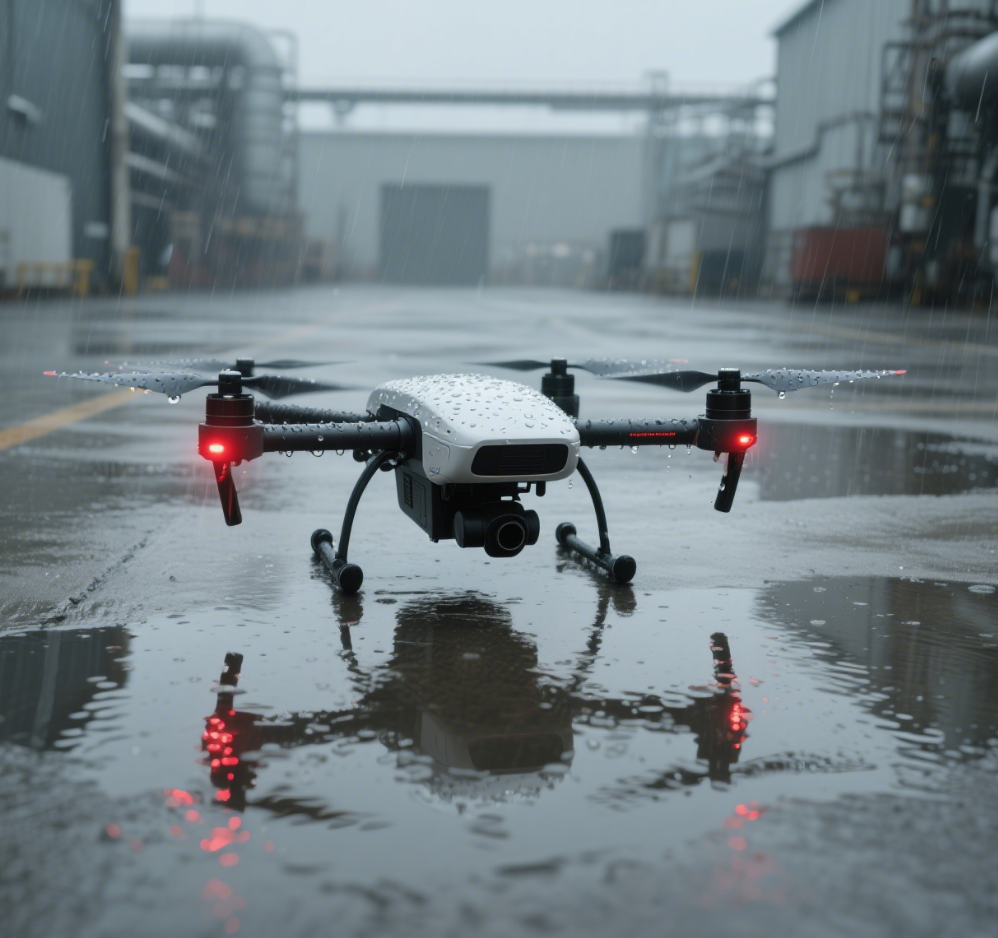Introduction
Autonomous drones are increasingly tasked with operations in complex environments such as urban rooftops, industrial sites, and disaster zones. Achieving safe and precise landing remains a critical challenge. GPS-based navigation alone often lacks the accuracy required for tight landing spots, while visual sensors may fail under low-light, foggy, or dusty conditions. Millimeter-wave (mmWave) radar provides a reliable solution, enabling drones to detect obstacles, measure ground distance, and land safely in challenging environments.
1. What Makes Precise Drone Landing Challenging?
Drones face multiple difficulties when attempting precise landings:
-
Urban rooftops and parking areas have limited space, obstacles, and uneven surfaces.
-
Industrial facilities often contain pipes, machinery, and moving personnel.
-
Disaster zones feature rubble, uneven terrain, and unpredictable dynamic obstacles.
Without precise landing capability, drones risk collisions, mission failure, and property damage. This challenge is particularly critical for delivery drones, industrial inspection drones, and emergency response operations.
2. How Does mmWave Radar Solve Landing Problems?
MmWave radar offers several advantages for landing assistance:
-
Accurate Distance Measurement – Provides real-time ground distance, allowing drones to adjust altitude and descent rate precisely.
-
Obstacle Detection – Identifies small or irregular obstacles on the landing zone, such as poles, wires, or uneven terrain.
-
All-Weather Performance – Functions reliably in rain, fog, dust, or low-light conditions.
-
Low Latency Feedback – Rapid updates enable drones to adjust descent paths in real-time.
By combining these features, mmWave radar complements GPS, IMU, and visual sensors to ensure reliable landing. For practical implementation, Linpowave’s V300 mmWave radar is an example of a compact solution suitable for drone integration.
3. How Is mmWave Radar Implemented for Precision Landing?
For precise autonomous landings, mmWave radar integrates with multiple technologies:
-
4D Imaging and MIMO Antenna Arrays – Provides high-resolution spatial data, including distance, angle, height, and velocity, enabling accurate terrain mapping and obstacle detection.
-
Multi-Target Tracking Algorithms – Distinguishes moving obstacles from static landing targets, ensuring safe touchdown.
-
Sensor Fusion – Combines radar data with GPS, IMU, and visual inputs to maintain navigation accuracy and provide redundancy.
-
Autonomous Descent Control – Flight control algorithms use radar input to dynamically adjust pitch, roll, and descent rate for precise landing.
For background on mmWave technology, see Millimeter Wave Radar - Wikipedia.
4. What Are Real-World Applications?
Urban Delivery Drones
In dense urban areas, drones face narrow landing spots and obstacles like antennas or HVAC units. MmWave radar allows drones to detect these hazards and land safely on rooftops or designated drop zones.
Industrial Inspection Drones
For inspecting wind turbines, factories, or pipelines, mmWave radar enables drones to land safely on small platforms or return to charging stations even in poor lighting.
Disaster Relief Drones
In disaster zones with rubble or uneven terrain, mmWave radar ensures drones can land safely and deliver emergency supplies accurately.
5. How Can Linpowave Radar Be Used?
Linpowave mmWave radar systems are particularly suitable for precision landing:
-
Compact Design – Lightweight and small, ideal for drone integration.
-
Detection Range – 0.4 to 300 meters, covering near-ground and mid-range obstacles.
-
Multi-Target Tracking – Supports dynamic environments, minimizing false positives.
-
All-Weather Reliability – Works under rain, fog, dust, or low light, enhancing mission success.
Integrating Linpowave radar improves landing safety, reduces mission failures, and supports drones in complex environments.
6. What Are Future Trends?
As drones expand into commercial delivery, industrial inspection, and emergency response, precision landing will become increasingly critical. Future developments may include:
-
AI-Driven Radar Analysis – For predictive obstacle avoidance and optimal landing site selection.
-
Advanced Sensor Fusion – Integrating radar with LiDAR, cameras, and ultrasonic sensors for redundant, reliable navigation.
-
Urban Air Mobility (UAM) – Precision landing will be essential for drones, air taxis, and automated logistics in crowded cities.
MmWave radar is positioned to become a standard solution for autonomous, safe, and precise drone operations.
Conclusion
Precision landing is a major bottleneck for autonomous drones in complex environments. GPS alone is often insufficient, and vision-based sensors can fail under adverse conditions. MmWave radar offers a robust, all-weather, high-precision solution, enabling drones to detect obstacles, measure ground distance, and land safely. Linpowave mmWave radar demonstrates how integrating radar into drones enhances mission reliability and operational safety in urban, industrial, and disaster scenarios. For more background on radar technology, see Millimeter Wave Radar - Wikipedia.



